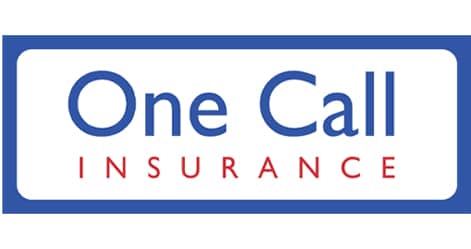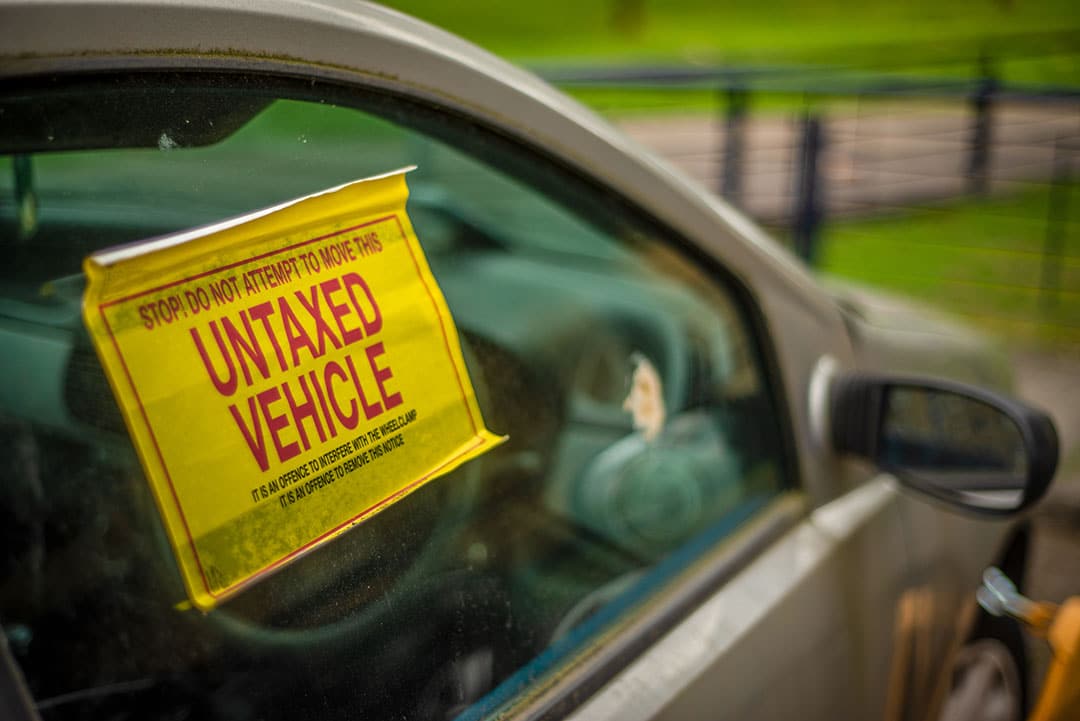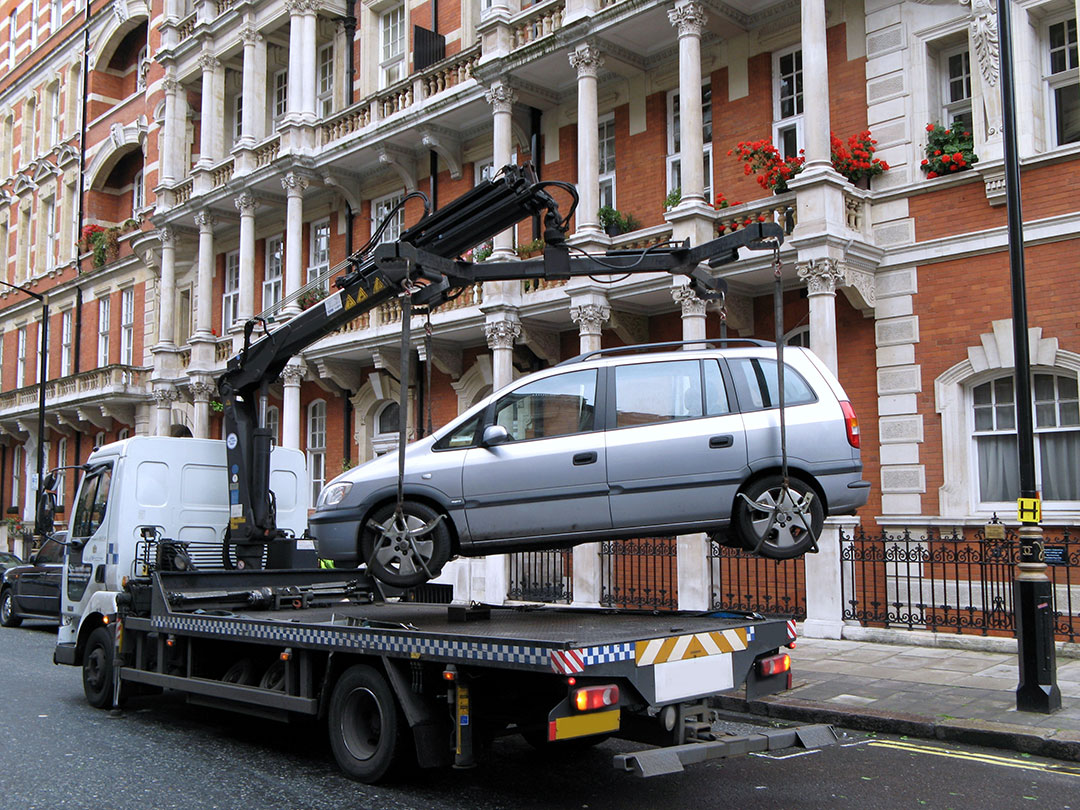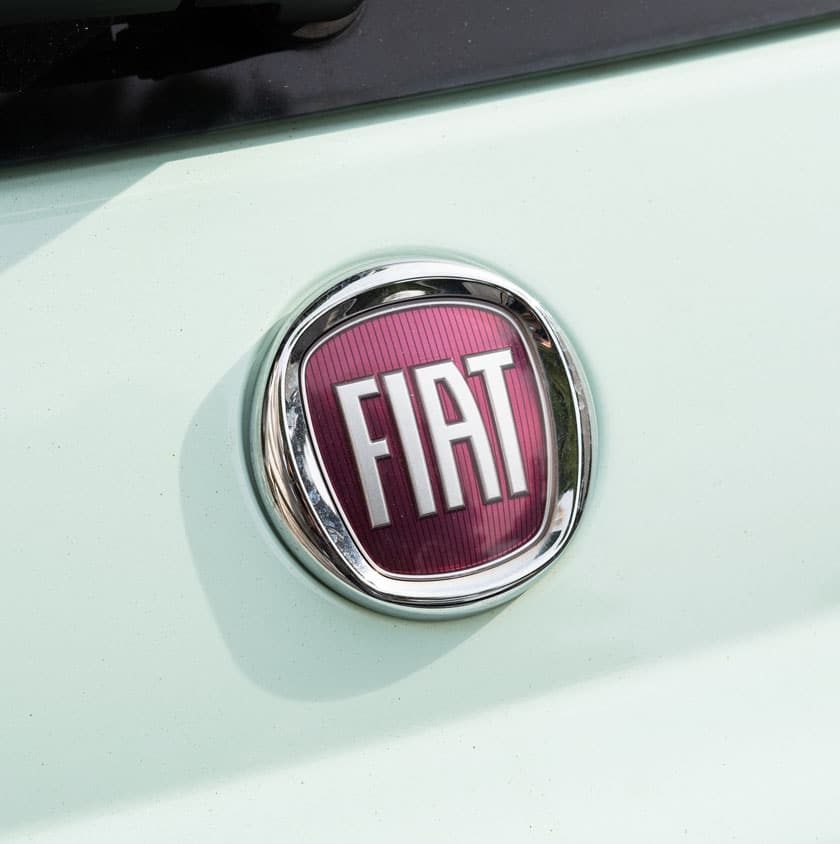
Fiat Insurance
Compare Fiat Car Insurance Quotes
- Compare 120+ insurers
- You could save up to £518*
- Find a great deal today

Compare affordable fiat car insurance from top UK’s leading car insurers including:
Why Compare Fiat Car Insurance Quotes at SimplyQuote.co.uk?
Fiat insurance premiums can vary widely depending on the model, trim level, and who’s behind the wheel — comparing quotes helps make sure you’re not overpaying for cover that doesn’t fit.
Fiats are known for being affordable, compact, and easy to run — but that doesn’t automatically mean cheap car insurance. A 1.0-litre Panda might sit in a low insurance group, but a fully-specced Fiat 500 Lounge or Sport edition driven by a young city-based driver can be priced very differently. Add in the rise of electric models like the 500e and things get even more complex.
That’s why comparing quotes is essential. A single Fiat model can attract drastically different premiums depending on how it’s driven, stored, or modified. Whether you’re looking for budget-friendly cover for your first car or tailored protection for a leased hybrid, SimplyQuote gives you a clearer picture of what’s out there.
We work in partnership with Quotezone.co.uk, one of the UK’s leading insurance comparison platforms, to bring you quotes from a panel of FCA-regulated insurers who understand the nuances of insuring Fiats — from urban runarounds to fleet-friendly estates.
With one quick form, you’ll get side-by-side prices and policy features from multiple insurers — no sales calls, no guesswork, and no pressure to commit. Whether you’re a learner, commuter, or business user, comparing Fiat insurance through SimplyQuote helps you find the right policy at the right price.
Who Are Fiat?
Fiat is one of Italy’s most iconic automotive brands, known for building compact, affordable cars that dominate Europe’s city streets — and remain a go-to choice for UK drivers seeking style, efficiency, and low running costs.
Founded in 1899, Fiat (Fabbrica Italiana Automobili Torino) has long been at the heart of urban mobility. From early classics like the Fiat 124 to the original Cinquecento, the brand has specialised in small cars with big personalities — a trait that continues today with models like the Fiat 500, Panda, and newer additions such as the all-electric 500e.
Fiat is now part of the global Stellantis group, which also owns Peugeot, Citroën, Vauxhall, and Jeep. Despite that scale, Fiat’s appeal remains distinctly personal: city-friendly dimensions, low insurance groups, and eye-catching designs that make it popular with young drivers, commuters, and downsizers alike.
In the UK, Fiat’s model range includes:
- Fiat 500 – One of Britain’s most popular city cars
- Fiat Panda – A no-nonsense hatchback, ideal for budget-conscious buyers
- Fiat Tipo – A practical, family-friendly hatch or estate
- Fiat 500X – A compact SUV with crossover styling
- Fiat 500e – A fully electric version of the 500 with urban-friendly range
- Fiat Doblo – A van-based MPV, often used for business or wheelchair-adapted use
While most Fiat models sit in lower insurance groups thanks to modest engine sizes and practical design, factors like custom trims, city theft risk, and increasing electrification have introduced more pricing variation. Understanding how these traits affect cover is key to finding the right policy — especially for first-time or younger drivers.
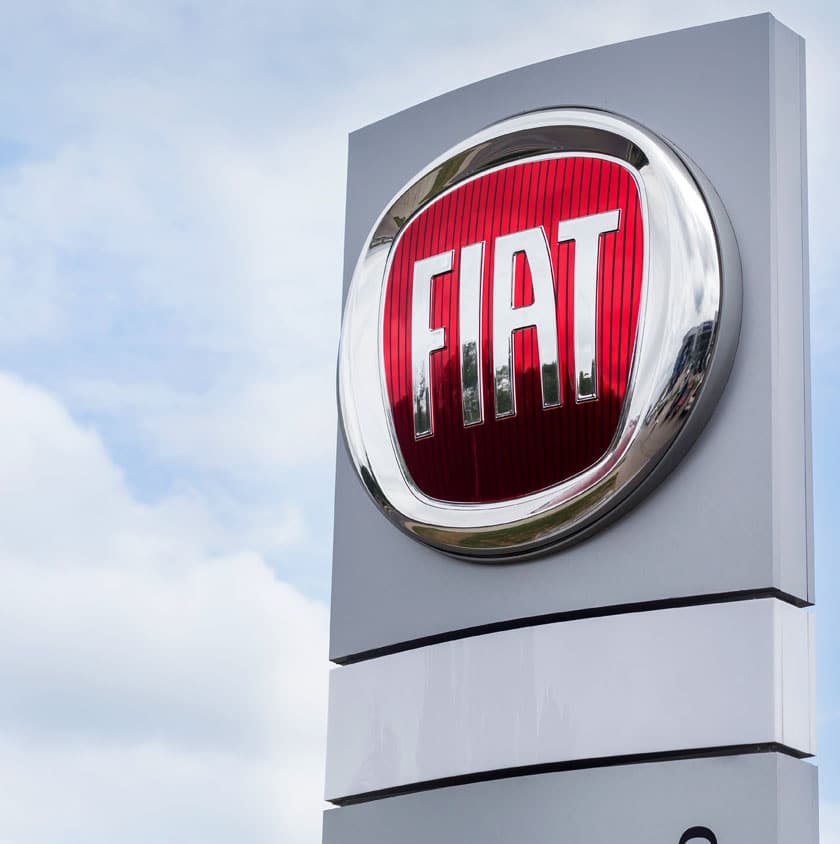
What Do I Need To Get A Quote?
To get a Fiat car insurance quote, you’ll need a few key details about your vehicle, how you use it, and your own driving history — nothing complex, but accuracy matters.
Most quotes can be generated in under five minutes, but even small discrepancies can affect the price. For example, a Fiat 500C with a panoramic roof and upgraded infotainment might fall into a different risk category than the base model. And if you’re insuring a 500e or leasing a Tipo, insurers will need to factor in specific usage, finance terms, and tech levels.
Here’s what you’ll usually be asked for:
- Registration or vehicle details – This helps identify the exact model, trim, and drivetrain (especially important for electric or hybrid versions like the 500e).
- How you use the car – Is it for commuting, school runs, occasional leisure, or business use? Misrepresenting this can void a claim.
- Your profile – Age, occupation, driving history, no-claims bonus, and any convictions. These shape your risk category.
- Annual mileage – Rough mileage bands are fine, but be realistic. Very low mileage might raise suspicion if it doesn’t match your usage.
- Parking and security – Whether the car’s kept on the road or in a garage, and whether it’s protected with alarms, immobilisers, or trackers.
- Modifications or extras – Fiat 500s, in particular, are often customised. Factory-fitted extras like different wheels or trim packs still count and must be declared.
The more accurate the details, the more accurate (and fair) your quote will be. Whether you drive a Fiat Panda for short errands or an electric 500e on a lease plan, getting the quote right helps ensure the cover actually fits.
Why Should I Consider Fiat-Specific Car Insurance Cover?
Because not all Fiats are created equal — and generic policies often miss the details that matter when your car is electric, leased, or personalised.
Fiats may have a reputation for being small and simple, but insurance pricing often tells a more complicated story. A base-model Panda driven in a quiet suburb is a very different risk profile to a modded Fiat 500 Lounge parked on-street in a city centre. Then there’s the rise of electrified models like the 500e, which require policies that understand battery systems, specialist parts, and recalibration costs.
Here’s where Fiat-specific cover makes a difference:
- Trim-level accuracy – The difference between a Fiat 500 Pop and a 500C Sport with a tech pack can affect both premiums and repair costs. Not all insurers price that nuance properly.
- Leased Fiats – Many 500e models are financed or leased. That often requires approved repairers, OEM parts, and restrictions on modifications — which standard policies may overlook.
- Urban risk profile – Fiats are popular in city centres, which means higher exposure to theft, vandalism, and minor collisions. Good policies will reflect that in pricing and protection.
- Modifications and personalisation – Fiat drivers often opt for factory upgrades or retro styling tweaks. If they’re not declared — or not covered — you could face denied claims or reduced payouts.
- EV-specific needs – Electric models introduce issues like cable damage, charging point liability, or battery-related faults. A policy without that awareness may leave gaps in protection.
Ultimately, Fiat-specific cover ensures that your usage, trim level, and ownership method are all factored into how your car is priced and protected. It means better cover, fewer assumptions, and fewer surprises when you actually need to make a claim.

What Does Fiat Car Insurance Cover Include?
A typical Fiat insurance policy includes third-party liability, fire and theft protection, and accidental damage — but comprehensive policies often extend to extras like windscreen cover, approved repairs, and EV battery protection for newer models like the 500e.
Fiat cars tend to be practical, compact, and often well-equipped — which means their insurance needs aren’t always as simple as their size suggests. What’s covered will depend on the level of cover you choose and how your vehicle is configured, especially if it’s leased, electric, or customised.
Here’s what’s usually included in a good comprehensive Fiat policy:
- Third-party liability – Covers damage or injury to other vehicles, drivers, or property.
- Fire and theft – Protects you if the vehicle is stolen or damaged by fire — particularly important in urban areas where Fiat 500s are common theft targets.
- Accidental damage – Covers damage to your own car, even if you’re at fault — from minor bumps to serious collisions.
- Windscreen and glass cover – Essential if you’ve got a Fiat 500 with integrated cameras or parking sensors embedded in the windscreen.
- OEM parts and approved repairs – Required for many leased or financed Fiats — helps you meet your contract terms and preserve the car’s value.
- EV and battery-related cover – For electric models like the 500e, this can include traction battery failure, cable damage, or charging point incidents.
- Courtesy car and breakdown cover – Often available as standard or as policy bolt-ons.
- Legal expenses and key cover – For scenarios like lockouts, theft of smart keys, or uninsured driver claims.
It’s also worth checking for cover that protects infotainment upgrades, dash cams, or smart parking sensors — particularly in higher-spec trims where tech is more integrated. Not all policies account for this automatically.
What’s Not Included?
Fiat car insurance, like any policy, comes with exclusions — and understanding them helps avoid claim disputes or denied payouts down the line.
Even comprehensive cover has limits. Some policies look complete at a glance, but if you dig into the fine print, you’ll find scenarios that are consistently excluded. This is especially important for Fiat owners, where personalisation, city driving, and tech features can all introduce risk if not properly declared or covered.
Here are some typical exclusions that may apply:
- Undeclared modifications – If you’ve added aftermarket parts or retrofitted your Fiat 500 with non-standard trim, it must be disclosed. Even cosmetic changes can void cover if not listed.
- Incorrect usage classification – Using your car for delivery driving, ride-sharing, or paid work without declaring it can instantly invalidate your policy.
- Wear and tear – Issues like worn brakes, ageing tyres, or battery degradation (especially in electric models) are considered part of ownership, not insurable damage.
- Driving without the right licence – Learner drivers on a Fiat 500 or Panda must have a valid provisional and supervision, otherwise any claim could be declined.
- Non-approved repairs – If your Fiat is leased or under finance, getting it repaired outside of an approved garage or using non-OEM parts could breach your agreement and lead to claim issues.
- Negligence – Leaving your keys in the ignition or doors unlocked might be seen as careless — and insurers can refuse to pay out in those cases.
Also, don’t assume every add-on is included by default. Things like legal expenses, key protection, or cover for expensive factory options (e.g. touchscreen upgrades or city pack sensors) are often only available as optional extras — and may need to be specifically selected at quote stage.
A strong policy doesn’t just cover the big stuff — it makes sure you’re not caught out by the small print.
How Much Does Fiat Car Insurance Cost?
Fiat car insurance typically costs between £400 and £850 per year, but prices vary dramatically depending on your age, driving history, postcode, and which model you drive.
Fiats are generally among the cheaper cars to insure, especially when compared to high-powered hatchbacks or large SUVs. But there’s no universal quote — a brand-new Fiat 500e on lease in central London will cost significantly more to insure than a used Fiat Panda in rural Yorkshire.
To give you a clearer picture, here’s a breakdown of estimated average premiums across popular Fiat models:
| Fiat Model | Driver Profile | Estimated Annual Premium |
|---|---|---|
| Fiat 500 (1.2 Lounge) | 25-year-old, 1 year NCB, suburban postcode | £650–£750 |
| Fiat Panda (1.0 mild hybrid) | 40-year-old, 5 years NCB, rural area | £400–£500 |
| Fiat 500e (electric) | 35-year-old, 3 years NCB, city postcode, leased | £700–£850 |
| Fiat 500X (1.0 City Cross) | 30-year-old, 2 years NCB, mixed-use driving | £650–£800 |
| Fiat Tipo (1.4 Easy Plus) | 45-year-old, 10+ years NCB, parked on drive | £500–£650 |
These are estimates, not quotes — but they reflect trends we see across multiple UK insurers. Age is one of the biggest cost drivers, especially for younger drivers insuring Fiat 500s. Location matters too. Urban postcodes typically come with higher theft risk and more frequent claims. And if your Fiat is leased, insurers may require higher cover levels, which can push up premiums.
Ultimately, the only way to know your true cost is to compare quotes based on your real details. But knowing these ranges helps you sanity-check the premiums you receive — and negotiate better when it’s time to renew.
How Can I Save Money On Fiat Car Insurance?
You can lower the cost of your Fiat car insurance by improving your vehicle’s security, adjusting your cover level, building a no-claims bonus, and choosing a trim that sits in a lower insurance group.
Fiats are often bought with cost in mind — but that doesn’t guarantee the cheapest premiums. Factors like model variant, age, location, and declared use all influence the price you’ll pay. Fortunately, there are several smart ways to bring your quote down without sacrificing protection.
Here’s what tends to work best:
- Choose the right trim – Avoid Fiat 500 Sport or Lounge editions if you’re under 25. Lower-powered or base trims (like Pop or Easy) often sit in much cheaper insurance groups.
- Increase your security – Park off-road or in a locked garage if possible. Use a Thatcham-approved alarm or immobiliser to qualify for discounts.
- Limit your mileage – If you only use the car occasionally or for leisure, make sure that’s reflected in your quote. Low-mileage policies can be significantly cheaper.
- Pay annually, not monthly – If you can afford to, paying upfront avoids the added interest or admin fees that come with monthly instalments.
- Consider a telematics policy – If you’re a young driver or insuring your first Fiat, a black box policy can reward careful driving with lower renewal prices.
- Compare policies before renewing – Don’t auto-renew. Fiat premiums vary between insurers, and loyalty rarely means savings.
- Build and protect your No Claims Bonus – Even one or two years of NCB can make a meaningful difference. Protect it if you’re eligible.
Insurers reward perceived low risk. That means responsible, experienced drivers of modestly specced Fiats who drive fewer miles and secure their cars well often see the best premiums.
*51% of consumers could save £518.14 on their Car Insurance. The saving was calculated by comparing the cheapest price found with the average of the next four cheapest prices quoted by insurance providers on Seopa Ltd’s insurance comparison website. This is based on representative cost savings from June 2025 data. The savings you could achieve are dependent on your individual circumstances and how you selected your current insurance supplier.
How To Compare Fiat Car Insurance Quotes At SimplyQuote.co.uk
Comparing Fiat car insurance quotes at SimplyQuote.co.uk is simple — just enter your details once and get tailored prices from trusted UK insurers, all in one place.
You won’t need to fill out the same form multiple times or chase quotes manually. Whether you’re insuring a brand-new Fiat 500e on a lease or a second-hand Panda for local runs, we make it easy to find the right cover at the right price.
Here’s how the process works:
- Tell us about yourself and your car
Add your age, postcode, driving history, and whether you have any no-claims bonus.
Enter your car registration or choose the Fiat model manually — including trim if known. - Describe how you’ll use the car
Is it for commuting, occasional use, or business? Where do you keep it overnight? This helps tailor your quote. - Get quotes from FCA-regulated insurers
We work with a wide panel of trusted UK insurance providers.
You’ll receive prices from insurers who understand Fiat ownership — including EVs, city driving, and lease terms. - Compare features and choose your policy
Filter based on price, excess, cover level, or extras like breakdown or legal cover.
Once you’ve found the right policy, click through to the insurer’s site to complete your purchase — safely and securely.
It takes just a few minutes, and there’s no pressure to commit. Whether you’re a first-time driver or switching for a better deal, SimplyQuote makes comparing Fiat car insurance straightforward, fast, and unbiased.
Frequently Asked Questions
Yes, most Fiat models sit in lower insurance groups thanks to modest engine sizes and affordable repair costs. However, trim level, driver age, and location can raise premiums — especially on higher-spec 500 models or electric variants.
The Fiat Panda and entry-level Fiat 500 trims (like the Pop or Easy) are typically the cheapest to insure. They’re in low insurance groups and appeal to careful, low-mileage drivers — making them less risky in the eyes of insurers.
Often, yes. While running costs are lower, the 500e’s battery, charging tech, and higher list price can lead to pricier premiums — especially in areas where EV repairs are less common or labour costs are higher.
Yes, but you must declare all modifications — even cosmetic ones. Undeclared mods can void your policy. Some insurers specialise in modified car cover, especially for retro or custom Fiat 500 builds.
Leased Fiats often require fully comprehensive insurance, OEM parts, and approved repairs. Not all standard policies include these by default, so it’s worth checking if your cover meets finance agreement conditions.
Only if the policy includes EV-specific protection. Not all insurers include this automatically. Battery issues, cable theft, and charging-related accidents often need specialist clauses — check your policy details.
Yes. Fiat 500s are popular first cars, which puts them into higher-risk categories for insurers when driven by under-25s. Black box (telematics) policies can help bring costs down for younger Fiat owners.
Yes, but you need to declare this when applying. “Social only” cover won’t protect you for commuting or business mileage. Some policies also exclude food delivery or rideshare use unless specifically added.
Car Insurance Guides









